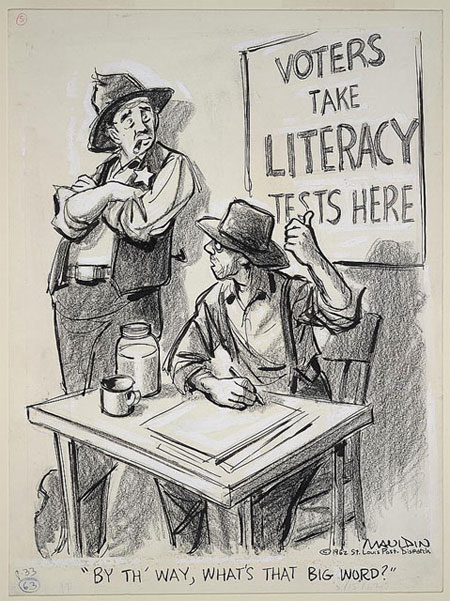Analyzing Primary Sources: Reading Cartoons

We often think of cartoons as funny but, in addition to entertaining and amusing us, they can also enlighten, provoke or persuade us. Political or editorial cartoons, in particular, provide subjective viewpoints about current issues and events and the people involved in them. Cartoonists use a variety of techniques—symbolism, exaggeration, irony, analogy and labeling to name a few—to convey their story or perspective through images. Learn more about these techniques by reviewing this Cartoon Analysis Guide.
Next, learn more about the art of cartooning by reading the articles and visiting the online exhibitions linked to below.
- “The Cartoon” by Herb Block
- “Afflicting the Comfortable” Cartoonist Paul Conrad Puts Words Behind the Pictures“
- Blog Round-Up: Political Cartoons
- Art in Action
- Cartoon America
- Down to Earth: Herblock and Photographers Observe the Environment
- Enduring Outrage: Editorial Cartoons by HERBLOCK
- Herblock!
- Herblock Gallery
- Herblock’s Gift: Selections from the Herb Block Foundation Collection
- Herblock’s History: Political Cartoons from the Crash to the Millennium
- Humor’s Edge: Cartoons by Ann Telnaes
- Bill Mauldin: Beyond Willie and Joe
- Monstrous Craws and Character Flaws
- Oliphant’s Anthem: Pat Oliphant at the Library of Congress
Finally, try your hand at analyzing political cartoons.
- It’s No Laughing Matter political cartoon analysis learning activity
- Analyzing Primary Sources: Prompts for Political Cartoons
- Political cartoons: guided primary source analysis activities
- Learning from the Source: Cartoonist Commentary-Vietnam War
- Learning from the Source: Perspectives on U.S. Expansion
- Political Cartoons and Public Debates primary source set & teacher’s guide
